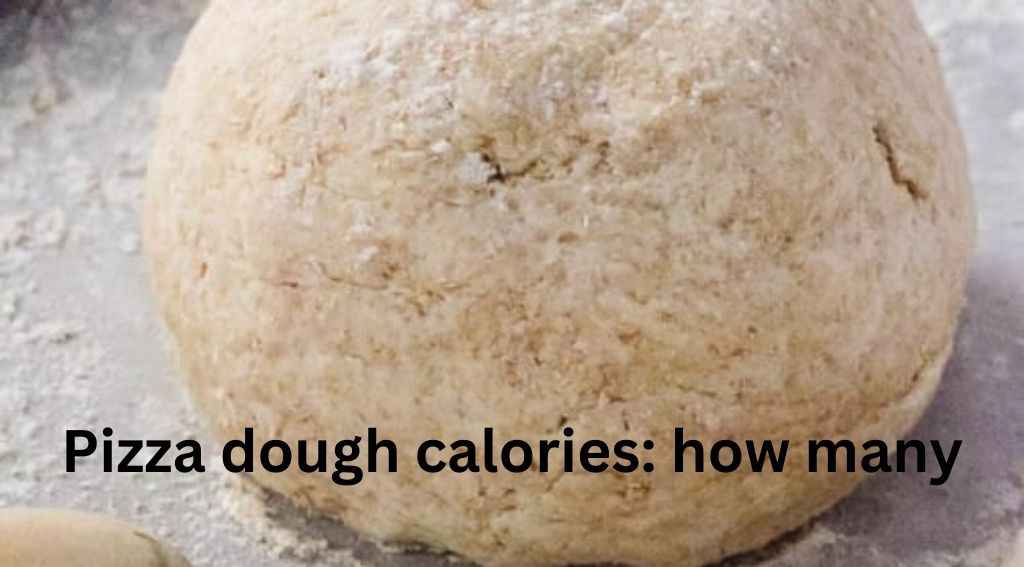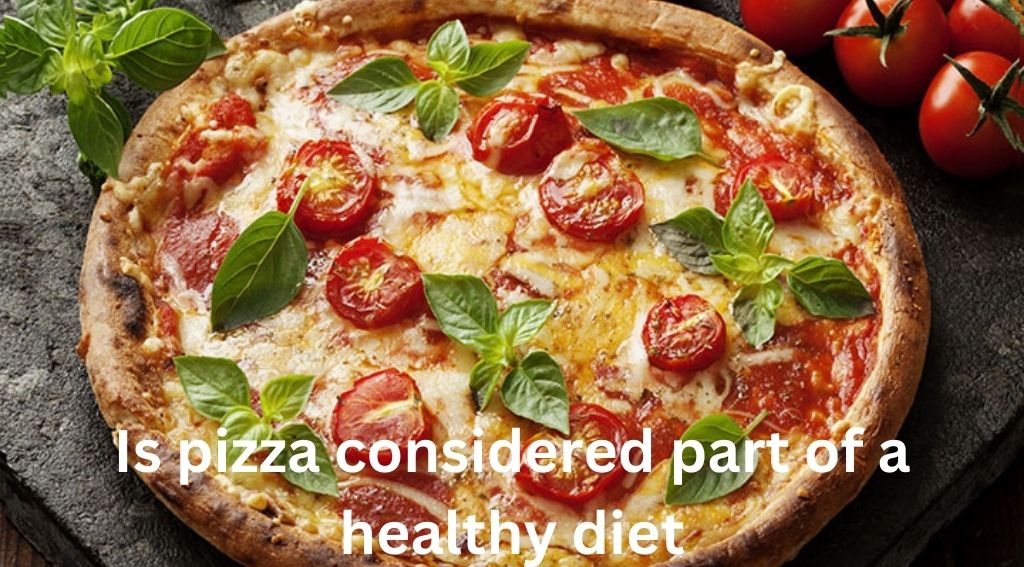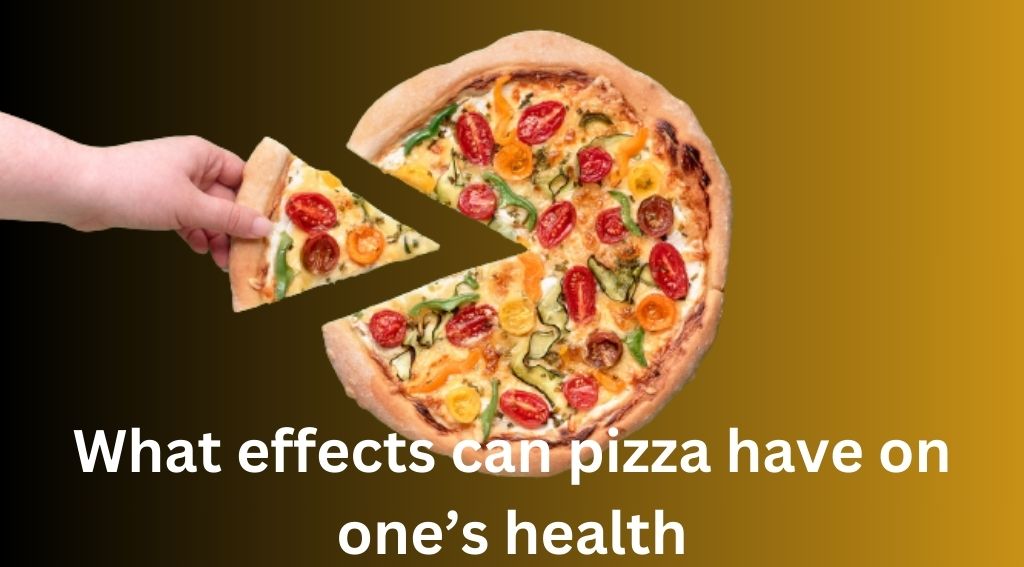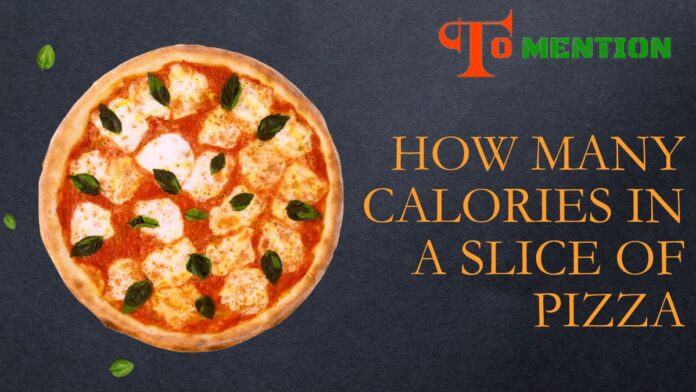This blog post is for you if you’ve ever wondered how many calories are in a slice of pizza. You’ll discover that when calculating your daily calorie intake, more than just “cheese” needs to be taken into consideration. The toppings, sauce, and crust can get expensive. An easy-to-use pizza calorie calculator is provided below to assist you with this conundrum. To get an idea of how many calories are in one slice or one serving, just enter the number of slices or ounces of each pizza topping and click “Calculate.
| Foods | Servings | Calories |
| Capricciosa Pizza | 2 slices ( 148 g) | 384 cal |
| Cheese Pizza | 2 slices ( 126 g) | 336 cal |
| Chicken Pizza | 2 slices ( 264 g) | 618 cal |
| Deep Dish Pizza | 2 slices ( 236 g) | 626 cal |
Why is pizza so high in calories?
Pizza contains a lot of calories because one slice typically has 40 grams of carbohydrates. Carbohydrates have 40 calories per gram, compared to 4.5 and 9 calories per gram for protein and fat, respectively. This is why a lot of pizzas have a lot of cheese and tomato sauce and are therefore high in carbohydrates. Pizza also has a lot of other toppings, like pepperoni, beef or pork sausages, bacon, etc., which raise its calorie count.
The Source: What Is Brooklyn Style Pizza
Different kinds of pizza have different nutritional values depending on the toppings and how they are cooked. Typically, a thicker crust has more calories than a thinner crust. Additionally, toppings like sausage and pepperoni may contain more fat and calories. Pay attention to the toppings when ordering pizza and stay away from those that add extra calories, like fatty cheeses or high-fat meats. Be aware that some chain restaurants may give you bigger portions than you need to make more money and eat more calories.
So keep this in mind the next time you have a craving for pizza, and treat yourself sensibly. Instead of fatty meats or cheese, pick a thin-crust pizza with healthy toppings like vegetables. When dining out, make sure to request a small portion rather than a large one. With a little planning ahead, you can still eat your favorite foods and stick to your diet plan.
How many calories are contained in a piece of pizza?
It is best to stick with simpler pizzas with fewer toppings if you are trying to watch your calorie intake. You can reduce the amount of cheese you use to top your pizza. A typical serving size of two slices is about 109 grams and 252 calories.
Two homemade pizza slices have how many calories each?
What is the caloric content of a slice of homemade pizza? The average weight of a handmade pizza is between 110 and 140 grams. Each slice of this homemade pizza has about 150–200 calories, 12–15 grams of protein, 22–30 grams of carbohydrates, and 3–5 grams of fat.
Pizza toppings: how many calories?
According to the USDA National Nutrient Database for Standard Reference, you can add about 150 calories to a slice of meat lover’s pizza. The total calorie count per slice would be 450 if additional cheese and pepperoni were added, each of which would add 150 calories. This may be too much for most people to consume in one sitting. Typically, a serving size is one-eighth of a pizza, or two slices (1/8 x p + 1/8 x c).
Personal pan pizza calories?
A personal pan pizza that is 10 inches wide and has two toppings can be consumed in about 12 slices (6 ounces) before feeling full.
Pizza sauce or tomato sauce calories?
About 10% of tomato solids and 90% of tomato sauce are made up of water. The amount of sugar added while the tomato sauce is being processed determines the exact caloric value. According to the USDA, a tablespoon of tomato sauce has about 8 calories.
Pizza dough calories: how many?

Depending on the type, whether it’s soft Italian bread or crusty French bread, one slice of pizza dough typically has 150–200 calories. Depending on the toppings, seasonings, and additional oil or butter added to the recipe for flavor and texture, additional ingredients may also increase this number.
Meat Lovers, Pizza Calories: How Many?
A meat lover’s pizza can have about 500 calories per slice when the calories from the ham, bacon, and Italian sausage are combined. However, just the cheese and tomato sauce have about 350 calories. Your overall calorie intake will rise if you add extra toppings like bacon or sausage.
Information on calories for each famous pizza type
So, you might be curious about the caloric content of a pizza slice. It is best to stick to simpler pizzas with fewer toppings if you are trying to watch your calorie intake. You can reduce the amount of cheese you use to top your pizza. A cheese pizza slice has about 200 calories overall. When ordering a slice of pizza, check the menu to see how big each slice is and order no more than one or two slices. For more nutrients and to bulk up your meal, consider eating a side salad with your pizza. If you want a healthier pizza, you can put fresh tomatoes and onions on it. However, you should avoid adding fatty meats, high-fat dairy products, creamy sauces, or more fried toppings, as these can add more fat and calories. What Is Pizza Made Of
Is Hawaiian pizza high in calories?
An average slice of traditional pineapple and ham pizza has 313 calories. An average vegetarian pizza slice without ham has 260 calories. Calorie breakdown: 16 grams of ham (27 percent protein, 27 percent fat), 113 grams of cheese (9% fat), 60 grams of tomato sauce (15 percent carbs, 15 percent sugars), and 19 grams of fat from fresh pineapple (4%).
Is Margarita pizza high in calories?
An average Margherita pizza slice contains 291 calories. Typically, a serving size is one-eighth of a pizza, or two slices (1/8 x p + 1/8 x c).
Is pizza considered part of a healthy diet?

Generally speaking, pizza can be part of a healthy diet. But some drawbacks to eating it must be taken into account.
Pizza has both good and bad things about it, so we need to look at both to decide if it should be part of a healthy diet. On the one hand, nothing is wrong with having a pepperoni or Hawaiian-style pizza every once in a while. Each time you eat either variety, the vegetables on top will increase your intake of vital nutrients like calcium, iron, and vitamin A.
However, if you’re talking about eating pizza more frequently than once per week, then this is where health issues could develop. A single serving of a deep-dish pie usually has 350 calories, 13 grams of saturated fat, and 1,950 milligrams of sodium. The average person should eat between 1,600 and 2,400 calories per day, depending on their gender and age.
When you eat too much salt, your blood pressure goes up, which can lead to kidney or heart disease. By causing elevated cholesterol levels, which also have an impact on cardiac health, too much saturated fat can hurt one’s health.
If you enjoy eating pizza and do so frequently, there are some steps you can take to ensure that your diet isn’t negatively affecting your health. Replace fatty meats with vegetables like broccoli, spinach, or tomatoes to reduce calories. Use whole-wheat or artisanal crusts when preparing meals at home because they have more nutrients than refined white flour (which contains zero fiber). For extra flavor without salt, top homemade pizzas with fresh herbs like basil, oregano, and parsley.
Caloric content of cheese pizza?
A cheese pizza slice has about 200 calories. The number of calories in each slice will rise if you add additional toppings like sausage or bacon.
Veggie pizza calories?
A slice of vegetable pizza is a better choice if you’re trying to cut calories, as it only has about 170–200. On this pizza, the toppings include green peppers, mushrooms, tomatoes, and onions. To increase the nutritional value of your pizza, you can also include additional vegetables like broccoli or spinach.
Can the calories in a slice of pizza be reduced?
Pizza with a thin crust has fewer calories than pizza with a thick crust, sometimes as much as 20% fewer calories per slice. However, you should exercise caution when selecting your toppings. Adding a lot of toppings to your pizza can increase its calorie content by more than 75%. Pizza from various delivery services comes in a wide range of calorie counts.
What effects can pizza have on one’s health?

Pizza is a widely consumed food because of its availability and versatility. Pizza can be a part of a healthy diet, despite what some people may believe.
There are numerous ways to make pizzas with whole grains, seasonal fruits and vegetables, and lean meats for health-conscious diners. The body gets its energy from the carbohydrates in the pizza crust. Important minerals like calcium (from mozzarella cheese), iron (from tomato sauce), and potassium can also be found in pizza.
Is frozen pizza safe?
It is best to choose a frozen pizza with a whole-grain crust over a traditional or thin crust if you’re looking for a healthy frozen pizza. Another option is to choose a frozen pizza with lots of toppings made of vegetables and low-fat cheese.
Since whole-grain crusts have more protein and fiber, they are always preferable. This is important because it will keep you full after your meal and keep you from snacking later in the day.
Healthy toppings for pizza?
Use as many vegetables as you can and lean meats like chicken or turkey to make a healthier pizza. Try deli meat in place of heavy toppings like pepperoni or sausage. In addition to being a great source of fiber and nutrients, vegetables are also very low in calories. If you must consume cheese daily, choose low-fat varieties that won’t taint the taste of your pie. Consider using soy mozzarella, which has less than half the fat of regular cow’s milk mozzarella cheese, or low-moisture part-skim mozzarella.
Where can I find the healthiest pizza?
You must make your pizza if you want the healthiest option. Making your pizza allows you to eliminate unhealthy ingredients and replace them with more wholesome ones because you have complete control over what goes into it.
There are several ways to add extra health benefits to your homemade pizza. For that extra fiber, you can use whole-wheat flour for your crust rather than regular flour. Additionally, switching to low-fat mozzarella cheese from regular pizza cheese will save you a lot of calories. To avoid the added sugars in store-bought sauces, you can even make your own tomato sauce if you’re feeling ambitious. How healthy you want your homemade pizza to be is entirely up to you.
FAQS: How Many Calories In A Slice Of Pizza?
A slice of thin-crust pizza has how many calories?
An average thin-crust pizza slice has about 230 calories. However, the number of calories in a pizza can easily change depending on the toppings you choose and whether you eat it at home or in a restaurant.
Does a whole pizza work?
You could eat a whole pizza, but that would probably add up to more than 1,000 calories. Eating an entire pizza in one sitting isn’t the best idea if you’re trying to stay healthy because pizza is typically high in fat and sodium.
Can I have pizza once a week?
Depending on your normal diet, eating pizza once a week might be acceptable. For instance, if you eat pizza one day and then have a salad the next day, there’s no reason to worry about it. Pizza might not be the healthiest food to eat every day if you eat more than one slice at a time or eat it almost every night.
Can I have a salad for dinner and a slice of pizza?
You can certainly eat a slice of pizza for dinner and then a salad. This is a fantastic way to guarantee that you’re eating enough vegetables. Just be careful not to top your salad with too many high-calorie ingredients like bacon or croutons.
Is it allowed for me to eat pizza daily?
Even though eating a slice of pizza every day is possible, it’s not always the healthiest option. If you’re looking for a way to get your recommended daily intake of pizza, consider making your own at home with better ingredients or selecting a thin-crust variety. You can still enjoy yourself this way without eating too many calories or bad fats.
What percentage of carbs are in a slice of pizza?
An average pizza slice has about 30 grams of carbohydrates. The type of pizza you’re eating and the ingredients can, however, affect this number. For instance, a cheese pizza slice probably has fewer carbohydrates than a pepperoni pizza slice.
Is pizza productive or fat?
Pizza makes you fat, but that might be a bit of an oversimplification. Pizza can contain a lot of calories, making it difficult to lose weight if you eat too much of it. But there are many healthy ways to cook this food, so eating it once in a while shouldn’t hurt your fitness goals.
Conclusion
The number of calories in a slice of pizza can range from 150 to 250, depending on the ingredients. This number can be significantly decreased by making healthier versions of this dish, which can be done in a variety of ways. Therefore, pizza is always a good choice if you’re looking for a quick and delectable meal that won’t ruin your diet.
You now know everything you need to know about how many calories are in a slice of pizza. Pizza is always a good choice, whether you’re watching your calories or carbs or just looking for a filling meal that won’t break the bank.

